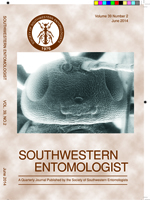Queens of red imported fire ants, Solenopsis invicta Buren, regulate colony dynamics by inducing workers to execute sexual larvae; proteins in the venom glands might be involved. Bioassays of the expressed, isolated queen venom proteins, Sol i 2q and Sol i 4q, did not show an increased rate of execution of sexual larvae compared to the control; however, Sol i 4q had a significantly lower execution rate than Sol i 2q and the control. Ants in the Sol i 4q treatments kept their brood primarily in the foraging chamber, closer to the added protein, and did not move them into the pumice nests; however, no difference in execution of sexual larvae between the colony and brood main locations (nest or tube/chamber) were observed. Identification of the crystal structure of the venom protein of red imported fire ant workers, Sol i 2w, revealed a hydrophobic cavity that binds to a ligand with an overall structure similar to LUSH, a pheromone-binding protein in Drosophila. If the proteins of the queen are structurally similar to the proteins of the worker, the possible cavity in Sol i 2q and Sol i 4q potentially binds to the execution pheromone, masking the protein as the pheromonal source instead of the ligand contained within. These hydrophilic queen venom proteins might act as a transport mechanism for the hydrophobic pheromones in the venom. Identification of the source of the pheromone and transport venom proteins is important in understanding the execution of sexual larvae in this pest species.
How to translate text using browser tools
1 June 2014
Queen Red Imported Fire Ants (Solenopsis invicta Buren) Induce Colony Sororicide to Reduce Competition
Stephanie A. Lockwood,
Richard J. Deslippe
ACCESS THE FULL ARTICLE

Southwestern Entomologist
Vol. 39 • No. 2
June 2014
Vol. 39 • No. 2
June 2014




